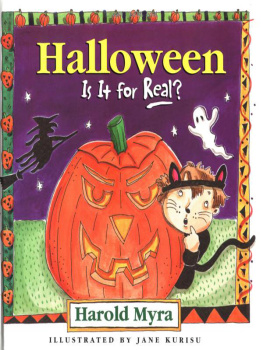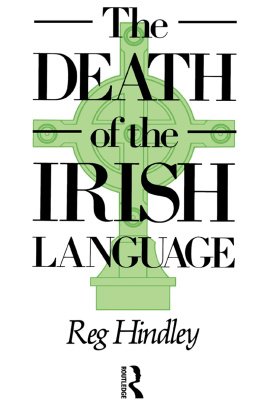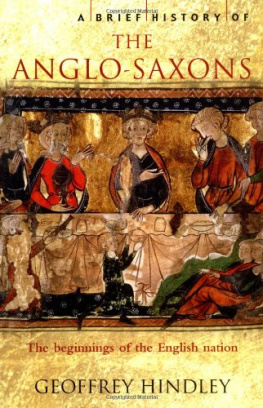ABOUT THE AUTHOR
Carol Ann Lee is an acclaimed biographer and has written extensively on the Holocaust. Following her ground-breaking research on Anne Frank, the Dutch government reopened the investigation into the Frank familys betrayal. She is also the author of two novels and three books for children. Her works have been published in 15 countries.
ABOUT THE BOOK
Infamous, I have become disowned, but I am one of your own Myra Hindley, from her unpublished autobiography
On 15 November 2002, Myra Hindley, Britains most notorious murderess, died in prison, one of the rare women whose crimes were deemed so indefensible that life really did mean life.
But who was the woman behind the headlines? How could a seemingly normal girl grow up to commit such terrible acts? Her defenders claim she fell under Ian Bradys spell, but is this the truth? Was her insistence that she had changed, that she felt deep remorse and had reverted to the Catholicism of her childhood genuine or a calculating bid to win parole?
One of Your Own explores these questions and many others, drawing on a wide range of resources, including Hindleys own unseen writings, hundreds of recently released prison files, fresh interviews and extensive new research. Compellingly well written, this is the first in-depth study of Hindley and the challenging, definitive biography of Britains most-hated woman.
ONE OF YOUR OWN
The Life and Death of Myra Hindley
Carol Ann Lee
TRANSWORLD PUBLISHERS
6163 Uxbridge Road, London W5 5SA
www.penguin.co.uk
Transworld is part of the Penguin Random House group of companies whose addresses can be found at global.penguinrandomhouse.com
First published in Great Britain in 2010 by Mainstream Publishing
an imprint of Transworld Publishers
Copyright Carol Ann Lee, 2010
Carol Ann Lee has asserted her right under the Copyright, Designs and Patents Act 1988 to be identified as the author of this work.
The author has made every effort to trace copyright holders. Where this has not been possible, the publisher is willing to acknowledge any rightful copyright owner on substantive proof of ownership
This publication contains references to other websites. While we hope you will be interested in these websites, you acknowledge that their content is not subject to our control and we do not endorse or accept any responsibility for the content of such websites
A CIP catalogue record for this book is available from the British Library
Version 1.0 Epub ISBN 9781845968991
ISBN 9781845967017
This ebook is copyright material and must not be copied, reproduced, transferred, distributed, leased, licenced or publicly performed or used in any way except as specifically permitted in writing by the publishers, as allowed under the terms and conditions under which it was purchased or as strictly permitted by applicable copyright law. Any unauthorized distribution or use of this text may be a direct infringement of the authors and publishers rights and those responsible may be liable in law accordingly.
1 3 5 7 9 10 8 6 4 2
Dedicated to the memory of
Joe Mounsey, Alex Carr and Dennis Barrow
and for
Ian Fairley, Mike Massheder and Bob Spiers
Here there is no why
Concentration camp guard, quoted in Primo Levi,
Survival in Auschwitz
I had my hair done on Saturday. It looks so nice that Im sorry Im all dressed up and nowhere to go (joke)
Myra Hindley, letter to her mother, 17 April 1966, two days before the Moors trial opened at Chester Assizes
CONTENTS
PREFACE
Theres never been a single book on this case thats got the facts right, former Detective Chief Superintendent Ian Fairley told me. As Hyde police stations newest member of the CID, Fairley was one of three policemen to enter 16 Wardle Brook Avenue on the morning of 7 October 1965, bringing the Moors Murders to an end. His statement underlines one of my primary reasons for writing this book: the facts have never been properly told.
I cant remember when I first heard about the crimes committed by Ian Brady and Myra Hindley. They occurred before I was born but have seeped into the national consciousness over the years, becoming something we absorb as part of our collective history. Although there have been other similarly horrific crimes in the decades that have passed since then, the Moors Murders case remains unparalleled in terms of the strength of emotion it provokes and the sense of utter incomprehension that a woman could abduct children with her lover, then collude in their rape, murder and burial on the moor. Repulsion at Hindleys part in the crimes, above all, gives the case its notoriety.
Myra Hindley died in prison in November 2002 but remains as omnipresent in death as she was in life. There have been acres of newsprint written about her since the 1960s, several books about the case, as well as documentaries and drama series. Those who attempt to say anything in her defence are met with a storm of protest while those who feel that she was evil are accused of being too emotional and unwilling to believe in redemption. The truth, as always, is more complex. It is an unbearable fact that Myra Hindley was capable of love and kindness towards her family and friends, adoring of her niece and the children of those who visited her in prison, yet had been responsible for the sadistic murder of other children. The dichotomy is difficult to process it calls to mind how the perpetrators of the Holocaust were able to inflict torture and murder on a vast scale, then return home to their families quite clear of conscience. Contrary to what some sections of the media would have us believe, people who commit monstrous acts look no different to the rest of humanity and have likes and dislikes, strengths and weaknesses too. What sets them apart are their choices acts of appalling cruelty and violence but otherwise they exist among us as nursery nurses, doctors, office workers, shopkeepers... In some cases, they are even children themselves Mary Bell, Constance Kent, Robert Thompson and Jon Venables, the Doncaster boys who cannot be named...
What lay behind Hindleys choices and whether she was genuinely remorseful or not remain points of contention. She and her supporters claim that she acted under duress and had redeemed herself, while her victims families and a large section of the public believe her crimes were committed out of sheer wickedness and her remorse was simply a facade to win her freedom. This book explores her motivation and what followed it as dispassionately as possible in order to leave the reader to draw his or her own conclusions.
A biography of Myra Hindley understandably draws accusations of sensationalism and unnecessarily raking over painful memories; I hope to have steered clear of the former, while the latter may also be true of almost any study of contemporary history. Ive also tried to give a voice to the people who are rarely heard in books of this kind: the victims families. Myra Hindleys supporters and friends present their views, but it seems to me that a book about someone who has committed murder should reflect if they wish it the impact on the people closest to the victims. The book also draws on the memories of the policemen involved with the original investigation, none of whom have ever spoken in-depth publicly about the case. Their recollections result in the overturning of a number of persistent misconceptions. Myra Hindleys recently released prison files give new insights into the woman, her crimes and the institutions that contained her. They include personal papers, prison reports, documents and correspondence, many of which are published here for the first time.














